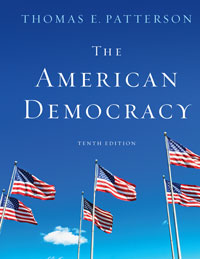| bill | A proposed law (legislative act) within Congress or another legislature.
|
 |
 |
 |
| cloture | A parliamentary maneuver that, if a three-fifths majority votes for it, limits Senate debate to thirty hours and has the effect of defeating a filibuster.
|
 |
 |
 |
| conference committees | Temporary committees formed to bargain over the differences in the House and Senate versions of a bill. A conference committee’s members are usually appointed from the House and Senate standing committees that originally worked on the bill.
|
 |
 |
 |
| constituency | The people residing within the geographical area represented by an elected official.
|
 |
 |
 |
| filibuster | A procedural tactic in the U.S. Senate whereby a minority of legislators prevent a bill from coming to a vote by holding the floor and talking until the majority gives in and the bill is withdrawn from consideration.
|
 |
 |
 |
| gerrymandering | The process by which the party in power draws election district boundaries in a way that is to the advantage of its candidates.
|
 |
 |
 |
| incumbent | The current holder of a particular public office.
|
 |
 |
 |
| jurisdiction (of a congressional committee) | The policy area in which a particular congressional committee is authorized to act.
|
 |
 |
 |
| law (as enacted by Congress) | A legislative proposal, or bill, that is passed by both the House and the Senate and is not vetoed by the president.
|
 |
 |
 |
| lawmaking function | The authority (of a legislature) to make the laws necessary to carry out the government’s powers.
|
 |
 |
 |
| logrolling | The trading of votes between legislators so that each gets what he or she most wants.
|
 |
 |
 |
| midterm election | The congressional election that occurs midway through the president’s term of office.
|
 |
 |
 |
| open-seat election | An election in which there is no incumbent in the race.
|
 |
 |
 |
| oversight function | A supervisory activity of Congress that centers on its constitutional responsibility to see that the executive branch carries out the laws faithfully and spends appropriations properly.
|
 |
 |
 |
| party caucus | A group that consists of a party’s members in the House or Senate and that serves to elect the party’s leadership, set policy goals, and plan party strategy.
|
 |
 |
 |
| party leaders | Members of the House and Senate who are chosen by the Democratic or Republican caucus in each chamber to represent the party’s interests in that chamber and who give some central direction to the chamber’s work.
|
 |
 |
 |
| party unity | The degree to which a party’s House or Senate members act as a unified group in order to exert collective control over legislative action.
|
 |
 |
 |
| pork (pork-barrel spending) | Spending whose tangible benefits are targeted at a particular legislator’s constituency.
|
 |
 |
 |
| reapportionment | The reallocation of House seats among states after each census as a result of population changes.
|
 |
 |
 |
| redistricting | The process of altering election districts in order to make them as nearly equal in population as possible. Redistricting takes place every ten years, after each population census.
|
 |
 |
 |
| representation function | The responsibility of a legislature to represent various interests in society.
|
 |
 |
 |
| rider | An amendment to a bill that deals with an issue unrelated to the content of the bill. Riders are permitted in the Senate but not in the House.
|
 |
 |
 |
| seniority | A member of Congress’s consecutive years of service on a particular committee.
|
 |
 |
 |
| service strategy | Use of personal staff by members of Congress to perform services for constituents in order to gain their support in future elections.
|
 |
 |
 |
| standing committees | Permanent congressional committees with responsibility for a particular area of public policy. An example is the Senate Foreign Relations Committee.
|
 |
 |
 |
| veto | The president’s rejection of a bill, thereby keeping it from becoming law unless Congress overrides the veto.
|





